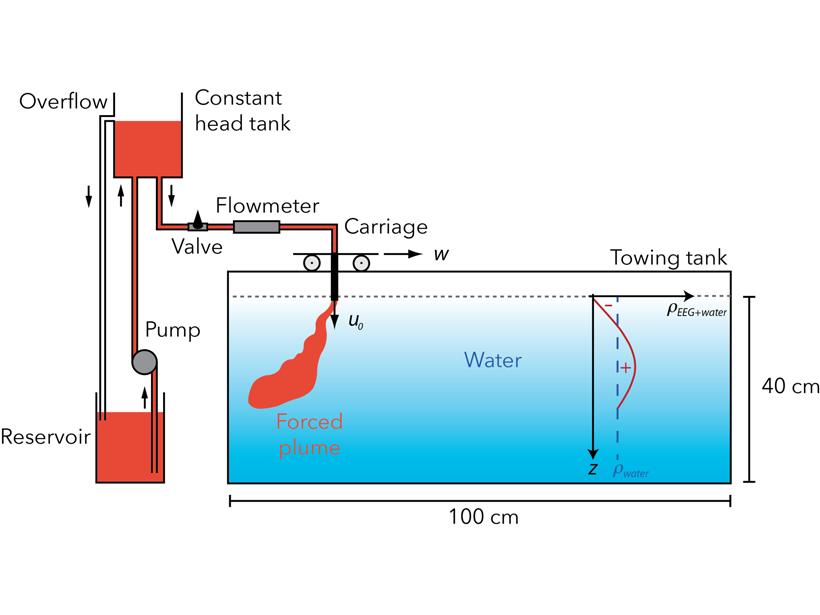Source: Journal of Geophysical Research: Solid Earth
The fate of volcanic eruptive columns (collapsing versus buoyant regime) is a complex issue in physical volcanology and represents a major hazard related to volcanoes. Column dynamics depends on a large number of variables, most of which are still poorly constrained.
Michaud‐Dubuy et al. [2020] shed new light on some of those variables combining physical models and lab experiments, yielding new criteria for predicting when plumes will eventually collapse to form deadly pyroclastic density currents. In particular, by combining a new theoretical model with specific lab experiments, the authors explore the importance of atmospheric wind velocity and profile in determining the final dynamics of the eruptive mixture. Results are also successfully compared with well-studied eruptions such as those of Mount Hudson (Chile) and Pinatubo (Philippines), suggesting that the interaction of wind with the volcanic plume can play a major role during explosive events.
Citation: Michaud‐Dubuy, A., Carazzo, G., & Kaminski, E. [2020]. Wind entrainment in jets with reversing buoyancy: Implications for volcanic plumes. Journal of Geophysical Research: Solid Earth, 125, e2020JB020136. https://doi.org/10.1029/2020JB020136
—Marco Pistolesi, Associate Editor, JGR: Solid Earth
Text © 2020. The authors. CC BY-NC-ND 3.0
Except where otherwise noted, images are subject to copyright. Any reuse without express permission from the copyright owner is prohibited.

